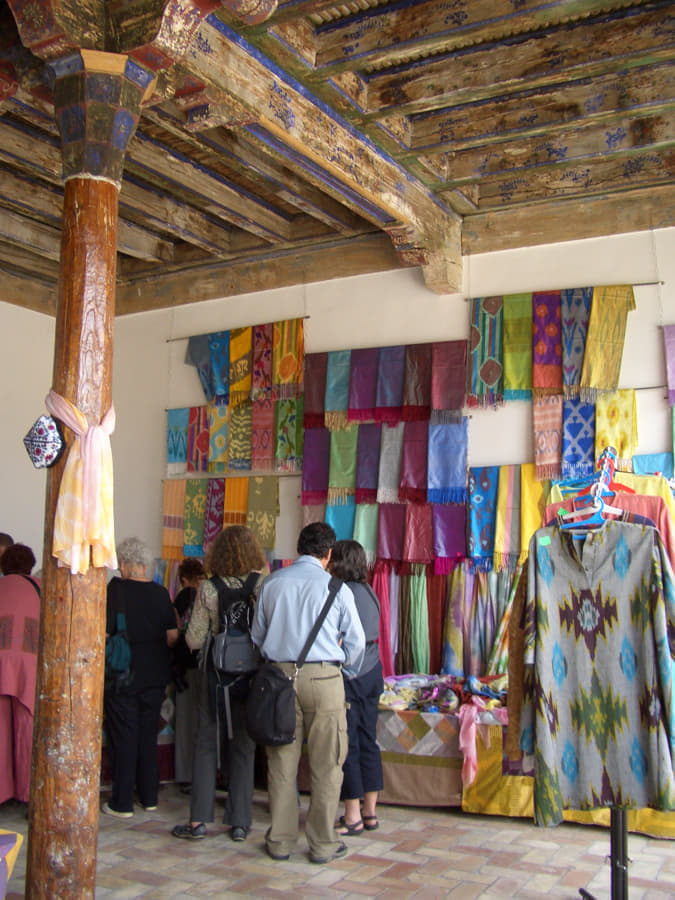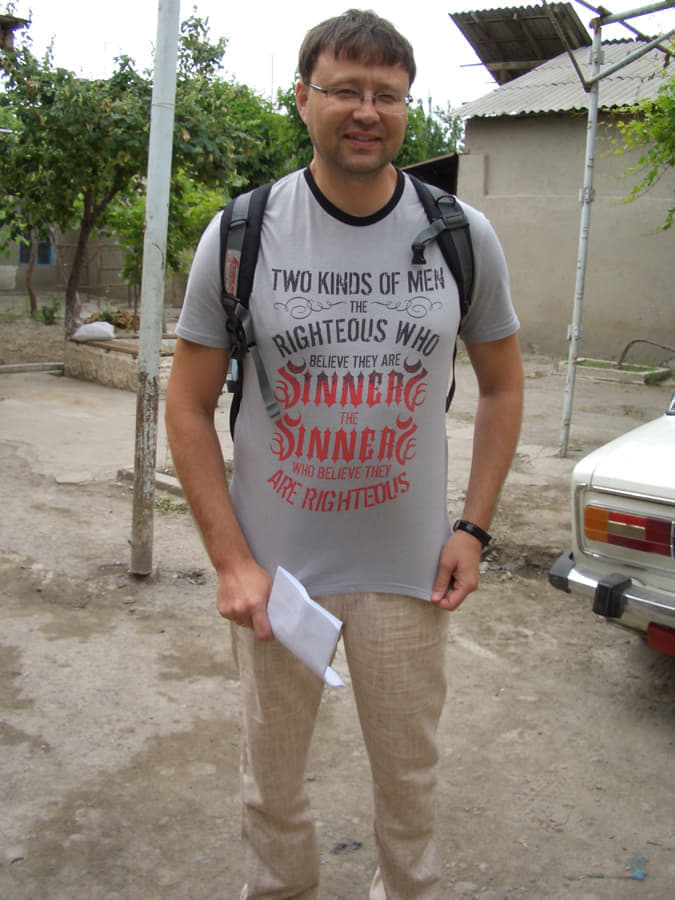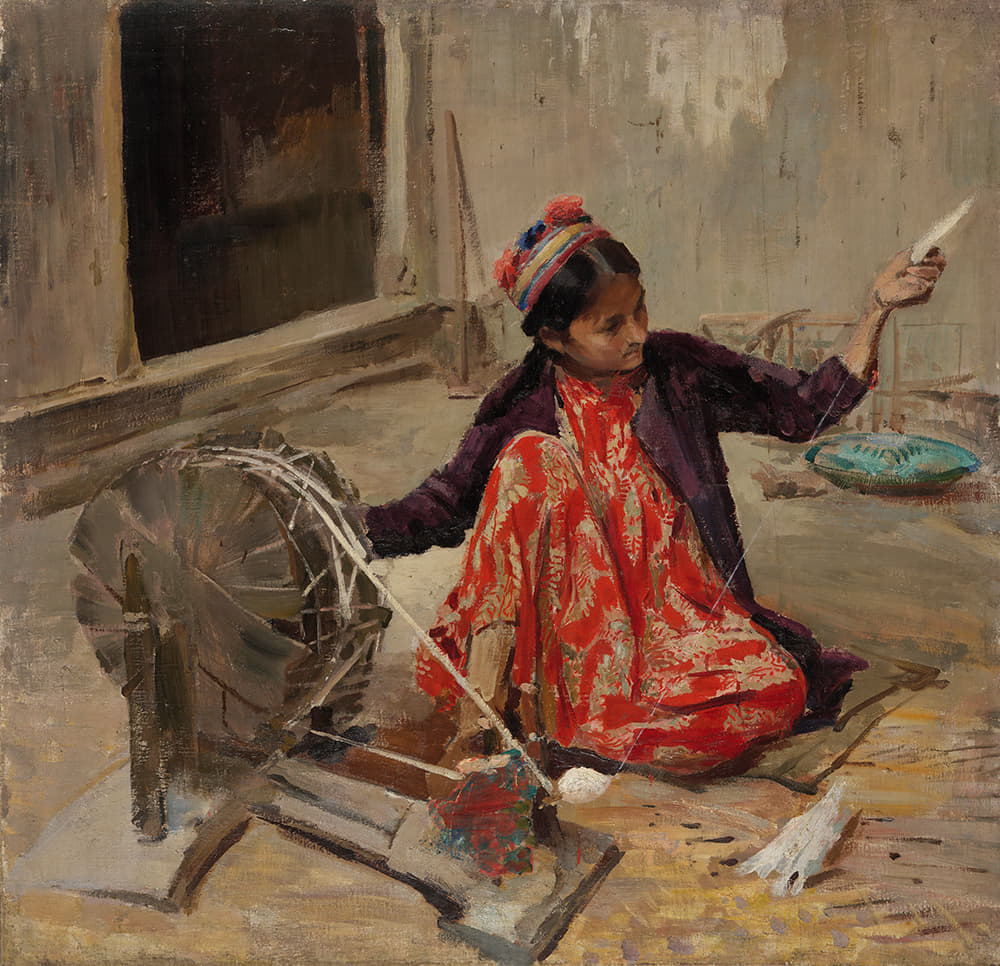As intrepid travelers not willing to let “advancing age” stand in the way, we met in Istanbul and then boarded a 12:15am flight bound for Uzbekistan…on the far side of the Caspian Sea. Some five hours later in Tashkent, we were met by our very knowledgeable “professors” and astute guides: Vedat Karadag, a folk art specialist and tour guide in Istanbul, and Marat Karimov, his Uzbekistan partner, who is based in Tashkent.
There, they led us on an incredible insiders’ journey along the fabled Silk Road from the Ferghana Valley in the east to Nukus in the far west and then back through the ancient walled cities of Khiva, Bukhara and Samarkand to marvel at glorious architecture, monuments and vistas.

This 16-day tour in May, sponsored by Santa Fe, New Mexico’s Museum of International Folk Art, included visits to some of the Uzbekistan artists who have participated in the International Folk Art Market held on the grounds of the Museum each year over a July weekend (next year July 5-9, 2023). They included Rasuljon Mirzaahmedov, an ikat master from Said Akhmad Khoja Madrasa, a little city in Margilan. There, as in other madrasas we visited, we came to appreciate the fact that there can be more to a madrasa than memorizing the Quran, and that the type of education madrasas offer can differ dramatically from country to country. In the nearby village of Rishton, we spent a very pleasant morning with the world-famous UNESCO-protected master potter Rustam Usmanov and his son, Damir Usmanov, who would be participating in that year’s Folk Art Market. So some of us decided to wait to buy their pottery in Santa Fe, rather than trust fragile treasures to the airline baggage handlers.
But it was no holds barred (except for running out of cash) when it came to textiles. Fortunately, we were warned about the scarcity of ATMs and were told that the U.S. dollar was the preferred currency for major shopping—what with the exchange rate being some 2,500 Uzbekistan Sums/US$1. that spring (compared to 11,145/US$1. today).
The Yodgorlik Silk Factory, housed in spacious adobe buildings in the 2,000 year-old city of Margilan, which turned out to be one of our favorite “shopping centers,” stood as proof that private enterprise has succeeded the years of Soviet domination and state planning since it was transferred to local hands in 2000. There, we watched the whole wonderful process: the extraction of silk thread from the cocoons boiling in a vat to the winding of the warp, tying of the intricate ikat designs, and the handweaving to the pressing of finished yardage between giant rollers.
Another unique treat dating from the Soviet era was the Karakalpakstan Museum of Art in the city of Nukus (a two-hour flight northwest of Tashkent), which had an extraordinary collection of Central Asian archaeological objects, in addition to applied and contemporary art and the Savitsky Collection of Russian avant-garde art. Who among those of us who had been enchanted by the film, The Desert of Forbidden Art, which ran for weeks at a local art film theater two years before, had dared dream of ever having the chance to see the works in person? The late Igor Savitsky, a courageous Russian artist-archaeologist, had managed not only to smuggle some 40,000 stunning works of banned art out of the Soviet Union, but also raised the funds to pay the artists, as well as build this museum to house the collection. And our gracious hostess, who led our tour of the museum and treated us to lunch, was the very woman he had designated as the one and only director, Marinika Babanazorova.
Still, Uzbekistan may be a land too far for some folks. So for those who would rather experience Uzbekistan vicariously and yet collect some of its exquisite crafts, we suggest that they attend the International Folk Art Market.
Meet multi-lingual Marat Karimov, our wise, witty Uzbek guide, who is still leading tours for the International Caravan Travel Service.

Jean Ranc is a psychologist retired from the University of North Carolina.
Featured: “A Girl of Khiva,” by Pavel Petrovich Benkov; painted in 1931.
